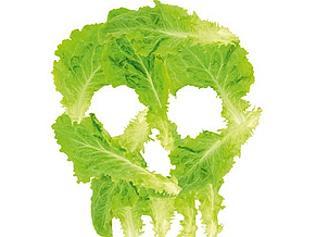Joanna Blythman’s Swallow This blows the lid on dodgy food labelling
Not sure if your food is as healthy or environmental as it claims? Here are the 10 questions you need to ask.

This is the season when most of us throw caution and diets to the wind and charge into the culinary fray with vigorous intent.
Fortunately, we live in an affluent land of abundance with a great array of gorgeous foods to suit every appetite and budget. What’s more, if you’re concerned about animal welfare, environmental sustainability and your health, you can gorge guilt-free because our supermarkets now have aisles dedicated to “natural”, “healthy”, “humane” and “sustainably produced” foods that mostly cost much the same as all the old bad stuff. That, surely, is progress?
I can’t help wondering how, almost overnight, this new breed of natural foods, swathed in earnest brown cardboard and seething with chia and quinoa, colonised half the real estate in our local supermarket.
Joanna Blythman is here to tell me that I’m right to be sceptical. Her book Swallow This is an expose of the inner workings of the food industry that makes Big Tobacco look benign. Blythman explains how the “clean label” is used in industrial food production to enable marketers to seduce health-conscious consumers. While some companies are genuine, others are unwilling to increase costs by improving ingredients.
As consumers become more alert to food fraud and interested in healthier ingredients, the commercial imperative to appear clean and green is irresistible. Claims like “sustainable”, “locally sourced” and “ethical” are becoming ubiquitous but frequently are followed by the slightly nervous disclaimer “whenever possible” delivered in small type at bottom, conveniently allowing the owner to trumpet green credentials while avoiding any real commitment to a principle.
The “organic” claim is the most widely abused, often used to imply intent rather than participation in a recognised certification scheme. Producers may adhere to the principles that govern organic production, but calling a product “organic” when it hasn’t been certified is misleading and devalues genuine organic farms that have been through an expensive, five-year accreditation process.
Australia has seven different organic certifying bodies, at least three separate free-range standards for pigs, meat chickens and egg chickens, and a host of other state and industry-based production standards.
Very few consumers have time to swot up on the details of each certifying program and verify claims. So we recommend a simple approach based on common sense and proof. Try asking these questions.
1. What is the name of the farm where this food was produced? It’s 2016 and even the most humble, Luddite farmer who is proud of their work and interested in the consumer will have some kind of online presence. At the very least, there should be a phone number and address.
2. Where is the farm? A farm either exists, in which case it’s on a map, or it doesn’t. You’d be surprised how many “farms” are situated in industrial estates on the outskirts of town.
3. Are photos on the packaging or online of animals on the actual farm, or just generic images? In particular, you want interior shots of sheds that house animals.
5. Is the product organic-farm certified? If the produce is labelled “organic” or “free range” but there’s no certification mark, ask to see proof of certification.
6. How was this specific animal raised? Was it fully shedded? Or free range during the day and shedded at night? Or fully pasture-raised with access to shelter at will?
7. What breed is this animal?
8. What did it eat? For example, if beef is labelled “grass-fed”, ask if it was “finished” on grass or fed only on grass throughout its life.
9. How old was it when it was slaughtered? In the case of veal, for example, there is a big difference between a five-day-old poddy calf and a five-month-old veal calf.
10. Where and how was it slaughtered? You can be squeamish about the detail, but your retailer should know every step of your product’s journey.
Laura Dalrymple is co-owner of ethical meat supplier Feather & Bone.
